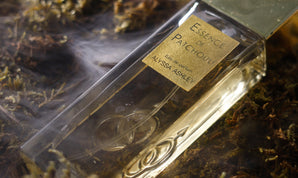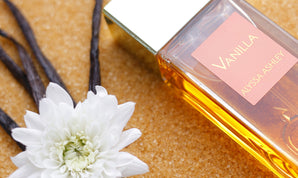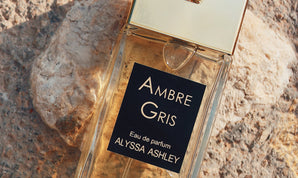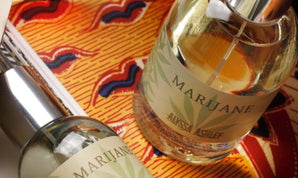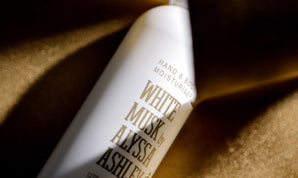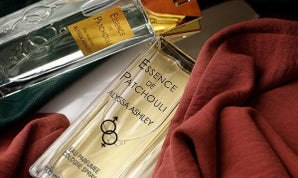Everybody knows the classic olfactory pyramid we use to describe perfumery products in perfume shops! But what exactly does this pyramid indicate? How is it made? And most of all, what does it tell us?
When constructing a new fragrance, the perfumer needs to understand how the interaction between the different raw materials will influence and modify the final product. For this reason one of the most important things they need to take into account is the evaporation time/persistence of the raw materials. And it is based on this that the various components of the perfume are placed on our famous triangle.
How the olfactory pyramid is composed
The olfactory pyramid is generally divided into three main parts, Head, Heart and Base. The Head and the Base can be divided again into two sub-categories, the former into “Top” notes, which usually evaporate within the first 20 minutes after spraying the fragrance, and the actual Head notes, which can be perceived for up to an hour. Then come the Heart notes, which evaporate within 4 hours; then finally the Base notes which can be divided into actual Base notes, persisting for up to 8 hours, and Deep Base notes, which can be perceived even after a few days.
Among the Top notes we will find the citrusy scents, the so-called hesperidic accords. They are fresh and light notes, which disappear ,as we said, within the first few minutes after spraying the perfume,but which give the perfume a universally appreciated character.
Among the Head notes we will place the more aromatic notes,, such as Lavender, Mint, Aniseed,which can persist for up to an hour. They always add a fresh feeling to the composition, but depending on their characteristics, they can be sweet, cool or warm.
Among the Heart notes we will find all the Fruity or Floral raw materials,with a sweet or warm character which persist for up to 4 hours.
Mosses, woods, spices and green notes make up the Base notesand can be fresh, warm, sweet or dry. Finally,Vanilla, Orris, resins or animal notes can be grouped in a hypothetical Deep Base, and are those notes we can still perceive after a few days when getting a jacket out of our wardrobes. Their character can be soft, powdery, rounded or sensual.

How to read it correctly
So, when perfumers needs to create a new fragrance, and turn their ideas into reality, they start by choosing from the thousands of raw materials they know, those which for their character, the way they interact and for their evaporation times will manage to give shape to what they are imagining, by positioning them ideally on the magic triangle, so as to evaluate also what the fragrance’s evolution in time will be.
After all, the olfactory pyramids that are printed and distributed with the perfume, don’t represent the fragrance’s composition 100%. Normally a perfume’s olfactory pyramid we are shown in a perfume shop or on the internet mostly represents the scent the perfumer wants to create, rather than showing us what raw materials are contained in it.
First of all, to explain this better, a perfume, to be perfectly balanced, needs many more raw materials than those shown on the pyramid. Secondly, many of the olfactory results are reconstructed by combining a number of raw materials and, in the pyramid, we will see only the final result this mini-composition aspires to construct.
A very common example in this case is Oud. Oud-scented fragrances have been among the most popular perfumery products in recent times, but just a few of those available in shops contain natural Oud. This happens for a number of reasons; first of all the very high cost of this raw material, due to its rarity and the very long production process needed to make it. Secondly, because natural Oud actually has a very pungent and animal-like scent, which in some cases can remind us of fertiliser, not one of the most popular and appreciated smells in the Western world. For this reason, expert noses have somehow managed to identify the most captivating aspects of Oud and have created some mini-fragrances which exalt these aspects alone. In particular, most of the olfactory reconstructions of Oud are built on the spicy notes of saffron and the warm but woody notes of cashmeran. In these cases, in the pyramid we will only read they contain Oud, and not the raw materials that were used to create it.
To give an example of the first case, some olfactory pyramids show that the perfume starts with floral notes. In this case it doesn’t mean that the classic Top or Head notes are absent, but that their contribution to the end result is so minimal that the explanation of the fragrance starts from those that are usually considered Heart notes, distinct from the actual Heart notes based on their evaporation times.
So in reality when we read an olfactory pyramid at the perfume shop we can’t be sure that the fragrance actually contains Bergamot, or Roses, or Vanilla or, again, Oud, but we can tell which scent our perfumer wanted to create. We can’t tell whether the raw materials are natural or synthetic by reading an olfactory pyramid, unless they are absolutes. Absolutes (referred to the extraction method) are in fact the result of an extraction from natural raw materials alone. To be clear, in perfumery, we call synthetic raw materials those which contain molecules reproduced chemically in a laboratory, such as Musk materials; those isolated from the natural raw materials, such as Vanillin and Coumarin; and those reconstructed by using different raw materials, as we said about Oud.
To conclude, I would like to debunk a common belief. People think that when we spray a perfume we only smell the Head notes, that after a couple of hours we only perceive the Heart notes, and that in the end we can only perceive the Base notes. The truth is that at the moment you wear a fragrance, every raw material is present and perceivable from the beginning. Clearly, the most persistent notes also have a slower volatility. So from the beginning they are harder to perceive, leaving more room for the crisp Head notes; but their olfactory result is still influenced by the composition of the Base. Therefore we can affirm that the only notes we can perceive isolated from others are the Base notes, as the others will have evaporated and will not be present any more.

